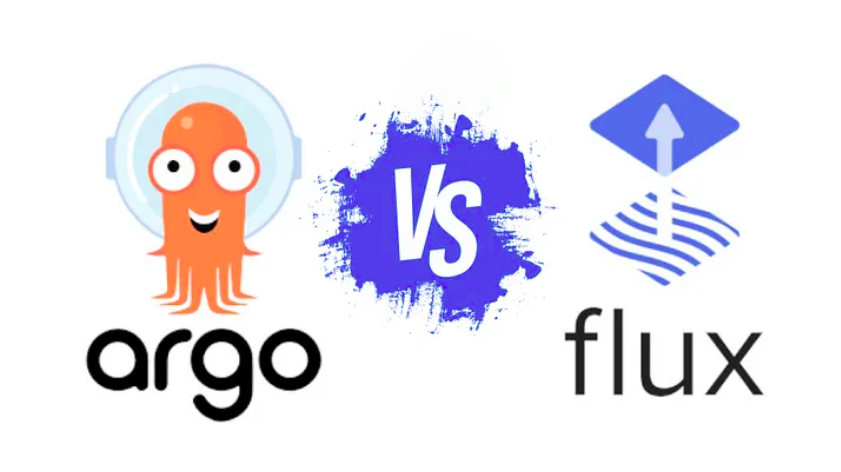
As GitOps continues to mature, two tools have emerged as leading solutions: ArgoCD and Flux v2. While both enable GitOps practices, their fundamental architectural approaches differ significantly. This post explores these differences and their implications for enterprise infrastructure.
The key distinction between ArgoCD and Flux v2 lies in their fundamental abstractions. ArgoCD adopts an application-centric architecture, while Flux v2 embraces a source-centric approach. This seemingly subtle difference has profound implications for how we model and manage our infrastructure.
ArgoCD’s architecture revolves around the Application Custom Resource Definition (CRD). This isn’t just an implementation detail – it’s a philosophical statement about how infrastructure should be organized.
apiVersion: argoproj.io/v1alpha1
kind: Application
metadata:
name: production-api
spec:
project: default
source:
repoURL: 'git@github.com:org/api.git'
path: k8s/production
targetRevision: HEAD
destination:
server: 'https://kubernetes.default.svc'
namespace: production
syncPolicy:
automated:
prune: true
selfHeal: true
This Application CRD encapsulates everything about a deployable unit: its source, destination, sync policy, and lifecycle management rules. Think of it as a self-contained universe for each application.
Flux v2 takes a fundamentally different approach. Its architecture is built around the concept of sources:
apiVersion: source.toolkit.fluxcd.io/v1beta2
kind: GitRepository
metadata:
name: infrastructure-configs
spec:
interval: 1m
url: https://github.com/org/infrastructure
ref:
branch: main
---
apiVersion: kustomize.toolkit.fluxcd.io/v1beta2
kind: Kustomization
metadata:
name: api-services
spec:
interval: 10m
path: ./services
prune: true
sourceRef:
kind: GitRepository
name: infrastructure-configs
Consider a large-scale Kubernetes environment supporting multiple teams:
ArgoCD’s Approach:
# Team A's Application
apiVersion: argoproj.io/v1alpha1
kind: Application
metadata:
name: team-a-service
namespace: argocd
spec:
project: team-a
source:
repoURL: 'git@github.com:org/team-a-service.git'
path: k8s
destination:
namespace: team-a
server: https://kubernetes.default.svc
# Team B's Application
apiVersion: argoproj.io/v1alpha1
kind: Application
metadata:
name: team-b-service
namespace: argocd
spec:
project: team-b
source:
repoURL: 'git@github.com:org/team-b-service.git'
path: k8s
destination:
namespace: team-b
server: https://kubernetes.default.svc
Flux v2’s Approach:
# Shared Infrastructure Source
apiVersion: source.toolkit.fluxcd.io/v1beta2
kind: GitRepository
metadata:
name: org-infrastructure
spec:
interval: 1m
url: https://github.com/org/infrastructure
ref:
branch: main
---
# Team A's Kustomization
apiVersion: kustomize.toolkit.fluxcd.io/v1beta2
kind: Kustomization
metadata:
name: team-a-services
spec:
path: ./teams/team-a
sourceRef:
kind: GitRepository
name: org-infrastructure
---
# Team B's Kustomization
apiVersion: kustomize.toolkit.fluxcd.io/v1beta2
kind: Kustomization
metadata:
name: team-b-services
spec:
path: ./teams/team-b
sourceRef:
kind: GitRepository
name: org-infrastructure
A key consideration for SREs is how these approaches affect infrastructure evolution over time.
ArgoCD’s application-centric model excels at:
Flux v2’s source-centric model shines with:
Both tools handle scale differently:
ArgoCD:
Flux v2:
The decision between ArgoCD and Flux v2 should be based on:
Neither approach is universally superior. ArgoCD’s application-centric model provides clear boundaries and lifecycle management, making it excellent for organizations with well-defined application boundaries. Flux v2’s source-centric approach offers more flexibility and better suits organizations with complex, shared infrastructure needs.
The key is understanding these philosophical differences and how they align with your organization’s needs, team structure, and operational patterns. Sometimes, you might even find value in using both tools for different aspects of your infrastructure.
Remember: Architecture isn’t just about technical capabilities – it’s about how those capabilities map to your organization’s way of working. Choose the tool that best matches your team’s mental model of infrastructure management.
You’re one step closer to optimize your IT operations in the cloud.
